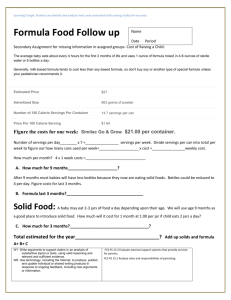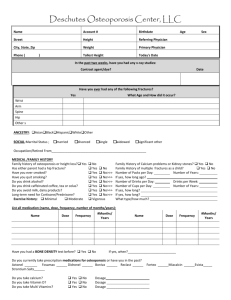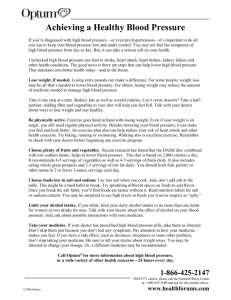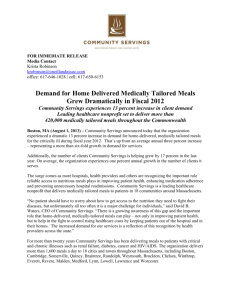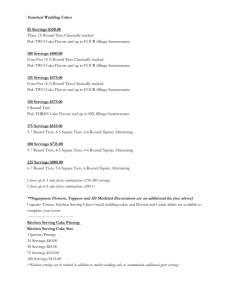File
advertisement
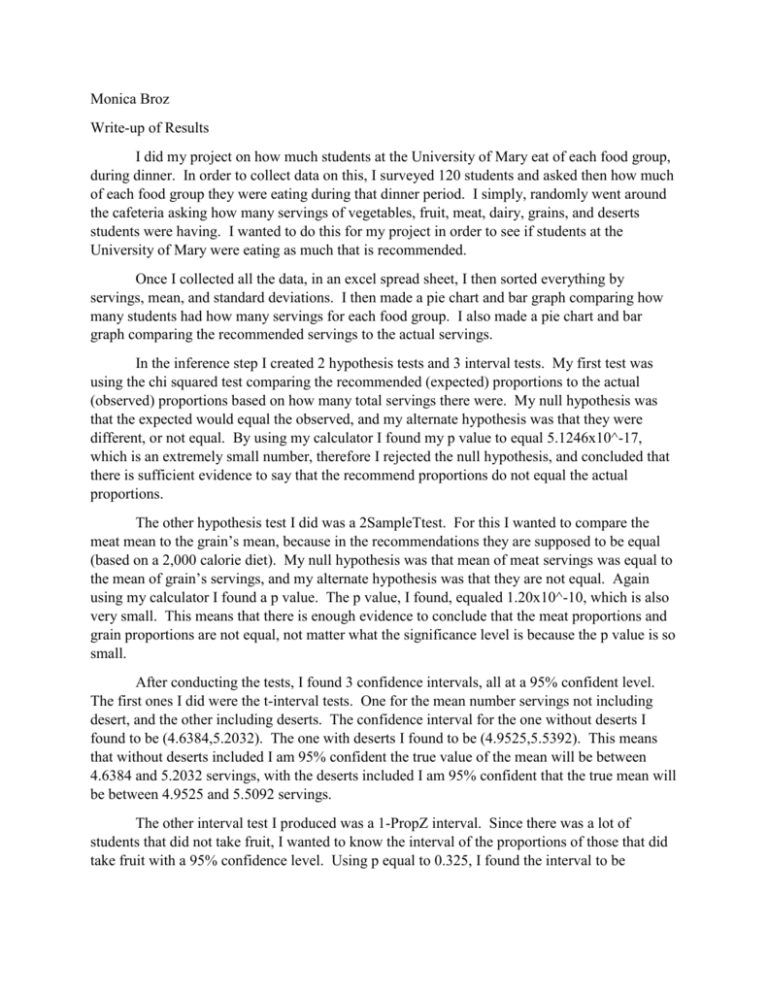
Monica Broz Write-up of Results I did my project on how much students at the University of Mary eat of each food group, during dinner. In order to collect data on this, I surveyed 120 students and asked then how much of each food group they were eating during that dinner period. I simply, randomly went around the cafeteria asking how many servings of vegetables, fruit, meat, dairy, grains, and deserts students were having. I wanted to do this for my project in order to see if students at the University of Mary were eating as much that is recommended. Once I collected all the data, in an excel spread sheet, I then sorted everything by servings, mean, and standard deviations. I then made a pie chart and bar graph comparing how many students had how many servings for each food group. I also made a pie chart and bar graph comparing the recommended servings to the actual servings. In the inference step I created 2 hypothesis tests and 3 interval tests. My first test was using the chi squared test comparing the recommended (expected) proportions to the actual (observed) proportions based on how many total servings there were. My null hypothesis was that the expected would equal the observed, and my alternate hypothesis was that they were different, or not equal. By using my calculator I found my p value to equal 5.1246x10^-17, which is an extremely small number, therefore I rejected the null hypothesis, and concluded that there is sufficient evidence to say that the recommend proportions do not equal the actual proportions. The other hypothesis test I did was a 2SampleTtest. For this I wanted to compare the meat mean to the grain’s mean, because in the recommendations they are supposed to be equal (based on a 2,000 calorie diet). My null hypothesis was that mean of meat servings was equal to the mean of grain’s servings, and my alternate hypothesis was that they are not equal. Again using my calculator I found a p value. The p value, I found, equaled 1.20x10^-10, which is also very small. This means that there is enough evidence to conclude that the meat proportions and grain proportions are not equal, not matter what the significance level is because the p value is so small. After conducting the tests, I found 3 confidence intervals, all at a 95% confident level. The first ones I did were the t-interval tests. One for the mean number servings not including desert, and the other including deserts. The confidence interval for the one without deserts I found to be (4.6384,5.2032). The one with deserts I found to be (4.9525,5.5392). This means that without deserts included I am 95% confident the true value of the mean will be between 4.6384 and 5.2032 servings, with the deserts included I am 95% confident that the true mean will be between 4.9525 and 5.5092 servings. The other interval test I produced was a 1-PropZ interval. Since there was a lot of students that did not take fruit, I wanted to know the interval of the proportions of those that did take fruit with a 95% confidence level. Using p equal to 0.325, I found the interval to be (.2412,.4088), meaning that I’m 95% confident that actual probability of selecting someone who eats fruit for dinner is between 24.12% and 40.88%. Lurking variables that could have caused not so accurate results are the honesty of the students, my measurements of servings, and that it was during lent at a Catholic University (it is important to note to that I did not collect any data on a Friday). In order for the accuracy of the results to be more true, more samples would need to be taken, and if I could do this again I would have added a junk food category to add to the number of servings and conducted these surveys at different times of the day as well.
